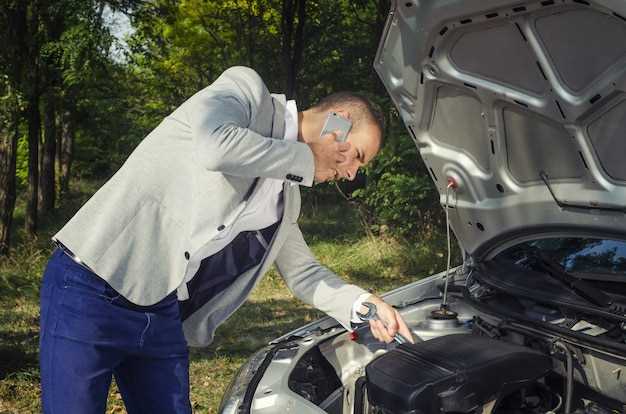
The electrical system of a car is a complex network that powers essential components such as the ignition, lighting, and various electronic features. When electrical issues arise, they can significantly disrupt the vehicle’s performance and safety. Understanding the common electrical problems can help car owners take proactive measures and seek timely repairs.
One prevalent issue in car electrical systems is a faulty battery. A weak or dead battery can lead to starting problems and affect the overall electrical function of the vehicle. Additionally, corroded terminals, loose connections, or even extreme weather conditions can further exacerbate battery-related issues.
Another common concern involves the alternator, which is responsible for charging the battery while the engine runs. A malfunctioning alternator can lead to a range of symptoms, including dimming lights, electrical failures, and ultimately battery drain. Regular checks on the alternator’s performance can prevent inconvenient breakdowns and more extensive electrical issues.
Moreover, wiring problems, such as frayed wires or short circuits, can occur over time due to wear and tear or exposure to the elements. These wiring issues can lead to intermittent electrical failures, posing risks not only to the vehicle’s function but also to driver safety. Identifying and addressing wiring problems early can save car owners from costly repairs down the line.
Diagnosing Battery Failure Signs in Your Vehicle

Identifying battery failure signs is crucial for maintaining your car’s electrical system. The battery plays a significant role in providing the power needed to start the engine and operate various electronic components. Recognizing issues early can prevent further problems down the line.
One of the most evident signs of a failing battery is difficulty starting the vehicle. If you notice that the engine cranks slowly or struggles to start, it may indicate that the battery is losing its ability to hold a charge. Additionally, frequent jump-starts may signal underlying battery problems that need addressing.
Another critical indicator is the presence of corrosion around battery terminals. If you observe a white, ashy substance or a crusty buildup on the terminals, it can hinder the electrical connection and create issues in your car’s performance. Cleaning the terminals may temporarily improve the situation, but replacement of the battery might be necessary.
Dim headlights and dashboard lights also point to potential battery failure. If your lights appear to be weaker than usual, it can signal that the battery is not supplying sufficient power. This reduction in electrical output could affect various systems in the vehicle, leading to more severe problems if not diagnosed in time.
Keep an eye on warning lights on the dashboard as well. Modern cars are equipped with a battery warning light that illuminates when there are problems with the charging system. If this light turns on, it’s advisable to have your battery and alternator checked as soon as possible.
Finally, an unusual smell, particularly a rotten egg odor, can denote a leaking battery. This smell indicates that the battery may be overcharging or has internal damage, and it requires immediate attention to avoid further complications.
In summary, diagnosing battery failure signs involves observing starting difficulties, corrosion, dim lights, warning signals, and unusual odors. Addressing these issues promptly can help ensure the reliability and longevity of your vehicle’s electrical system.
Identifying Faulty Wiring and Its Impact on Performance

Faulty wiring in a car can lead to a variety of performance issues that may affect its overall functionality. These wiring problems often manifest in unexpected ways, making it crucial for car owners to recognize the symptoms early on. Common signs of faulty wiring include flickering lights, malfunctioning accessories, or a car that fails to start at all.
One of the main problems caused by damaged or frayed wires is intermittent electrical connectivity. This can result in sporadic issues, such as dashboard warning lights illuminating without reason or engine performance dropping unexpectedly. Such inconsistencies can be frustrating and may lead to a lack of trust in the vehicle’s reliability.
Additionally, faulty wiring can create short circuits, which pose significant risks. When wires come into contact with each other or with metal components, they can generate excessive heat, potentially leading to electrical fires. The implications of this are severe, not just for the car but also for the safety of its occupants.
Moreover, degraded wiring can impede the performance of critical systems, including the ignition and fuel management systems. This could lead to reduced engine efficiency, increased fuel consumption, and difficulty in starting the vehicle. Addressing wiring issues promptly is essential to avoid long-term damage to your car’s electrical system.
To prevent these problems, regular inspections of the car’s wiring are advisable. Look for visible signs of wear, corrosion, or other damage. Utilizing a multimeter can help in diagnosing electrical continuity and identifying faulty connections. Consulting a professional mechanic is the best course of action for complex wiring problems.
In summary, recognizing and addressing faulty wiring is vital for maintaining your car’s performance. Ignoring these issues can lead to more significant problems that affect not only the car’s functionality but also the safety of those inside it.
Troubleshooting Issues with Alternators and Starters
Alternators and starters play crucial roles in a car’s electrical system. Problems with these components can lead to significant issues, such as a vehicle failing to start or losing power while driving. Understanding how to troubleshoot these issues is essential for maintaining optimal car performance.
Common problems with alternators include insufficient charging, which often results in a dead battery. If you notice dimming headlights or electrical accessories malfunctioning, it may indicate that the alternator is not producing enough power. Using a multimeter to test the voltage output can help determine if the alternator is functioning correctly. A reading below 13.5 volts may indicate a failing alternator.
In some cases, a faulty belt driving the alternator can cause problems as well. If the belt is loose or worn, it may not transfer power effectively, leading to charging issues. Inspect the belt for signs of wear and ensure it is properly tensioned to avoid these problems.
For starters, the most common issue is the inability to turn over the engine. This can be caused by a weak battery, defective starter motor, or wiring problems. When turning the key, if you hear a click but the engine does not crank, it typically points to a problem with the starter or its connections.
Inspecting the battery is the first step in troubleshooting starter issues. Ensure it is fully charged and that the terminals are clean and secure. If the battery is functioning well, the next step is to examine the starter motor itself. Look for any signs of corrosion or damaged wiring that might impede electrical flow.
Additionally, testing the starter relay can be beneficial, as a malfunctioning relay can prevent the starter from receiving power. Ensure all fuses associated with the starting system are intact and functioning. These steps can often help identify the source of problems related to alternators and starters.
Ultimately, regular maintenance and timely inspections can prevent many issues associated with car electrical systems. Understanding how to troubleshoot these specific components will empower you to address problems efficiently as they arise.




